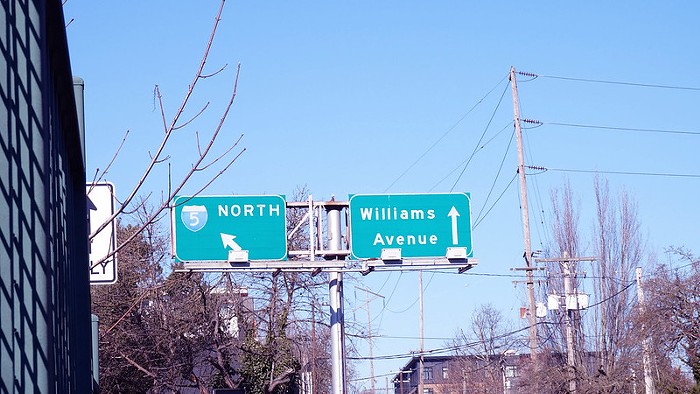PORTLAND ATTORNEYS could do worse than specializing in bridge construction. Lately, big fixes to the spans this city relies on have attracted acrimony and legal bills.
Consider: Multnomah County is locked in a complex, many-tentacled lawsuit over the Morrison Bridge, which needs a brand-new surface just three years after officials spent more than $10 million giving it a new (and badly flawed) deck.
And last week, the enormous Sellwood Bridge replacement project spurred litigation of its own. The construction firm overseeing the work says the county won't pay the higher-than-expected costs of drilling deep beneath the Willamette. Meanwhile, the Oregonian revealed the project has crept quietly over budget, though experts say that potential 3 percent overrun is fairly standard and hardly concerning.
So it's worth paying attention to the latest multi-million-dollar bridge fix on the horizon—which county officials say they'll pursue outside the typical protocol of seeking the cheapest bid for the job.
Beginning next year, the county's going to replace four enormous wheels that help the arms of the Broadway Bridge lift and lower. Officials figure the replacement could cost up to $10 million, with about 90 percent paid with federal money.
In most instances, that would require the county to first design the wheel replacement project, then solicit bids, picking the lowest. But at a hearing on January 8, county commissioners indicated they'd veer from that process.
County officials say the lowest-cost method is a bad idea for the Broadway project, arguing it's too complex for most contractors. Instead, they've won approval to first pick a contractor to help design the wheel replacement—and thus have a big say in the final cost—before almost certainly earning the right to do that work.
It's a procurement strategy known as the Construction Manager/General Contractor (CMGC) method, and it's proved popular in recent years. The county, along with experts the Mercury consulted, says the method is a good fit for highly technical projects.
For starters, it brings a construction firm on early, meaning contractors' input is built into the design. That can lead to faster work, and help officials dodge costs and conflicts with construction crews. And the contractor who helps with the design gives officials a "maximum guaranteed price."
But it doesn't always work like that.
The Sellwood Bridge replacement was among the county's first forays into the CMGC process. Officials say it saved time and money to have a construction firm help design the project. But that same firm—a partnership of two contractors called Slayden/Sundt—is now suing the county for $1.6 million, something that's supposed to be largely avoided under the CMGC process.
What's more, the county hasn't figured out a maximum guaranteed price for the total Sellwood Bridge project yet, though it's well under way. With many CMGC projects, that maximum is determined before construction starts.
"We're still working to identify it," says county spokesperson Mike Pullen, noting maximum prices have been tallied for individual project steps. "It is late in the game, and I think it's due to the complexity and multiple phases of the project."
The latest projections reveal the price of the Sellwood Bridge replacement could top $317 million, roughly $10 million more than initially estimated.
While the county says the Broadway project is a great fit for the CMGC method, there are those who argue it's never in the public's best interest to allow a contractor to influence design. Portland attorney John Bradach has worked in construction law for decades, and in 2013 he told the legislature that CMGC "almost always allows the fox into the chicken coop."
"I would question it even for that kind of project," Bradach said when the Mercury sought his take on the Broadway work. "I can't think of any kind of project that wouldn't benefit from price competition at the prime contractor level."


















